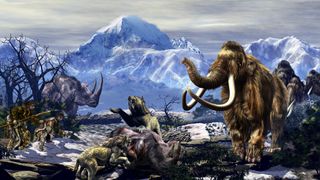Scientists are on the brink of resurrecting extinct species. Emblematic species such as the woolly mammoth, the dodo and the thylacine (also known as the Tasmanian tiger) could soon walk the Earth again, according to "de-extinction" companies and scientists.
De-extinction starts with DNA samples from the lost species. Sometimes this is the complete genome; other times, they may splice genes from the extinct species into the genome of a living animal. Then, in a process known as nuclear transfer, researchers implant this sequence into an egg cell taken from a closely related, living species and from which the original DNA has been removed. The resulting animal is genetically similar to the extinct one.
Scientists have already resurrected at least one lineage. In 2003, researchers in Spain performed nuclear transfer for a subspecies of Pyrenean ibex called the bucardo (Capra pyrenaica pyrenaica), which went extinct in 2000. A baby bucardo was born, but it died just a few minutes later due to a lung defect.
De-extinction science has progressed since then, and it could be less than a decade before we see some extinct species again.
For better or for worse, here are six extinct animals that scientists are considering bringing back.
Woolly mammoth
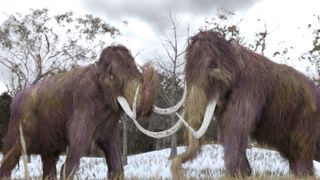
Woolly mammoths (Mammuthus primigenius) lived between 300,000 and 10,000 years ago, during the last ice age (2.6 million to 11,700 years ago) — although a small, isolated population survived on Wrangel Island until around 4,000 years ago. The main population roamed tundra that stretched across present-day Asia, Europe and North America. A shift in the climate at the end of the ice age, together with human hunting and dwindling genetic diversity in the population, may have driven woolly mammoths to extinction.
Permafrost in the Arctic has preserved the carcasses of woolly mammoths and even the 3D structure of their genome. This means scientists can extract well-preserved DNA and potentially assemble a genetic sequence resembling those of the original animals. This, in turn, would enable researchers to perform nuclear transfer with a modern elephant egg cell to give rise to a species similar to the woolly mammoth. Recent breakthroughs suggest woolly mammoth de-extinction is inching closer, with the U.S.-based de-extinction company Colossal Biosciences claiming it will produce its first "mammoth" calves by 2028.
Dodo
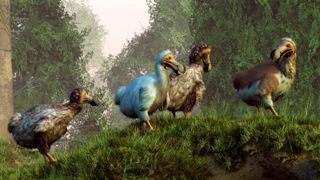
The dodo (Raphus cucullatus) was a large, flightless bird endemic to Mauritius, an island off the coast of Madagascar. Dodos went extinct in the 17th century as a direct result of European colonization and have therefore become an emblem of human-caused extinction. Colonizers arrived in Mauritius in 1598, bringing with them a panoply of non-native species, including rats, cats and even monkeys, according to the Mauritian government. These animals plundered dodo nests of eggs and chicks, reducing the number of birds on the island to critical levels in just a few decades. Together with deforestation and humans' hunting of dodos, predation ultimately led the species to die out by 1681.
Today, dodo DNA survives in natural history museum specimens. In 2022, scientists assembled the first dodo genome, using an exceptionally preserved specimen housed in a collection in Denmark. But several hurdles remain before the species can be brought back to life. These include the need to engineer genetic diversity into the dodo's DNA sequence so it does not end up with a population of clones, Ben Lamm, CEO and co-founder of Colossal Biosciences, told Live Science. On the plus side, Lamm said, it's much quicker and easier to gestate a dodo than a woolly mammoth or a thylacine, given that the bird's DNA is self-contained in an egg.
Thylacine
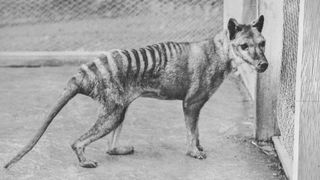
The Tasmanian tiger, or thylacine (Thylacinus cynocephalus), was a wolf-like, carnivorous marsupial with stripes on its lower back. It once thrived throughout what is now Australia. The species disappeared from the mainland between 3,000 and 2,000 years ago, but a population persisted on the island of Tasmania. In the late 19th century, the first European settlers in Tasmania introduced a bounty on thylacines, which people perceived to be voracious predators of livestock. The subsequent killings drove thylacines to extinction, with the last individual dying in a zoo in 1936.
Thylacines are a good candidate for de-extinction because there are plenty of intact specimens to extract DNA from, Andrew Pask, a professor of genetics and developmental biology at the University of Melbourne in Australia, told BBC Future. "Every major museum wanted one in their collection, so there are hundreds of samples around the globe, and some are exceptionally preserved," said Pask, who is working with Colossal Biosciences on de-extinction. But the DNA is very fragmented, meaning a lot of editing is needed to get a functional sequence. Pask and his colleagues sequenced a complete thylacine genome in 2017, and in 2023, researchers extracted RNA from a Tasmanian tiger. But there are many more challenges to overcome before a baby thylacine is born, he said.
Passenger pigeon
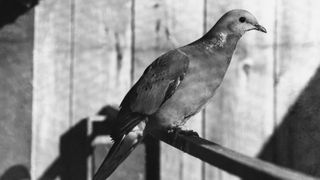
The passenger pigeon (Ectopistes migratorius) was once the most abundant bird species in North America, making up between 25% and 40% of the total bird population in what is now the U.S. before the 17th century, according to the Smithsonian Institution. European settlers hunted the pigeons for meat and progressively destroyed the birds' habitat, causing their extinction. Passenger pigeons traveled in large flocks and bred communally, which made them extremely vulnerable to hunting, according to the Audubon Society. The last known passenger pigeon, a female named Martha in honor of Martha Washington, died in 1914.
Museums hold dozens of stuffed passenger pigeon specimens, whose DNA scientists have extracted and sequenced. But the DNA is so fragmented, it's unlikely researchers will bring back the passenger pigeon in its original form. Instead, the biotechnology company Revive & Restore plans to introduce snippets of passenger pigeon DNA into the genome of modern-day band-tailed pigeons (Patagioenas fasciata) that will give rise to birds that look like the extinct species. The company aims to hatch the first generation of pigeons in 2025 and begin trial releases into the wild soon thereafter, according to its website. If successful, the company says the project will "demonstrate the potential of genomic intervention and help to restore the ecology of North America's eastern forests."
Aurochs
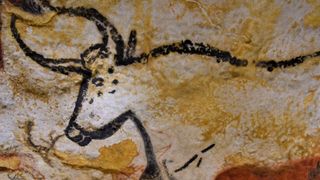
Aurochs (Bos primigenius) are the wild ancestors of all modern cattle, including domestic cows (Bos taurus). They were giant, horned beasts whose range extended across North Africa, Asia and nearly all of Europe for thousands of years, with the earliest known fossils dating to around 700,000 years ago. Aurochs were the largest terrestrial mammals left in Europe after the last ice age ended, but humans drove them to extinction through overhunting and habitat destruction. The last known aurochs died in 1627 in Poland's Jaktorów Forest.
Ongoing efforts to "de-extinct" the aurochs differ from those for other extinct species in that they do not require genetic engineering. Most of the aurochs' DNA lives on in modern cattle breeds, prompting researchers to try an alternative method called back-breeding. Back-breeding involves selecting and breeding cows that have physical traits and behaviors resembling those of aurochs. These are primarily Southern European breeds that are kept in relatively wild conditions, Ronald Goderie, an ecologist and the director of the Taurus Foundation, which oversees the aurochs project, told Live Science. The project, which is based in the Netherlands, has yielded more than six generations of cows and is getting "very close" to producing an aurochs look-alike, Goderie said.
Quagga
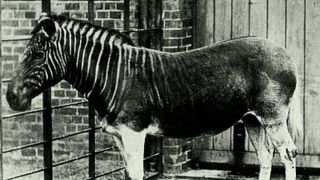
 1 New Concepts in Science*
1 New Concepts in Science*